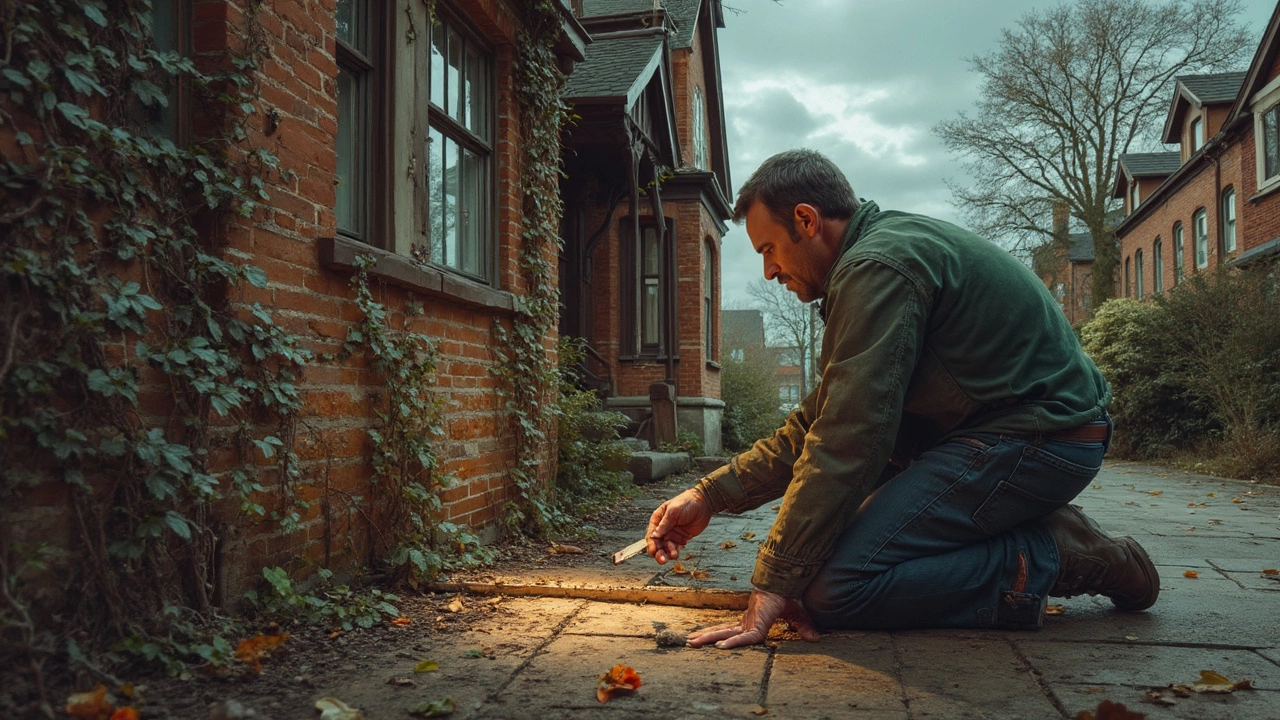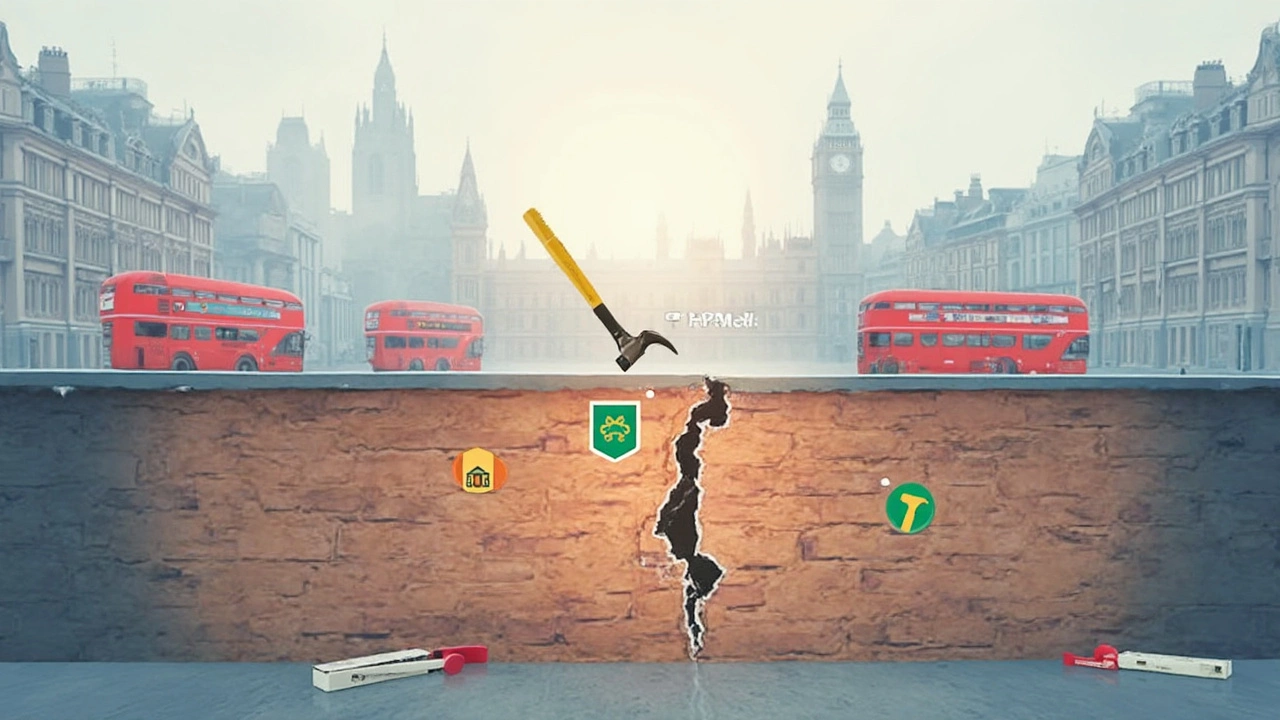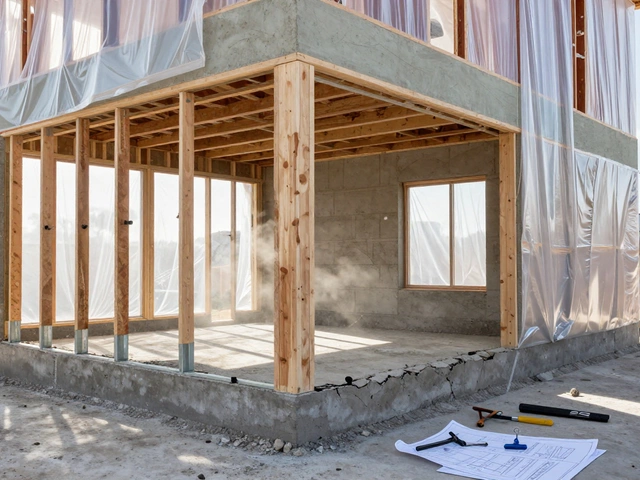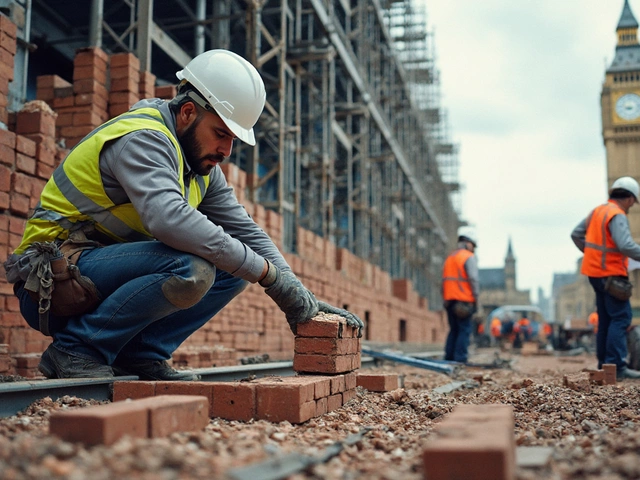So, you're looking at your home's foundation and you notice a crack. Not fantastic, right? But before you pull out the heavy machinery or drown yourself in repair costs, let's figure out what you're actually dealing with. Some cracks are just minor blemishes; others could mean serious trouble.
First off, size matters: tiny hairline cracks? Usually not a big deal. You can probably shrug them off as natural settling. But if we're talking about cracks that are over a quarter of an inch wide, it's time to investigate further. Width, location, and pattern all play a big role in telling whether a crack is just cosmetic or something causing nightmares down the road.
A horizontal crack, especially in a block foundation, can be a red flag for pressure issues. Vertical ones? Sometimes they're fine if they're thin and consistent, but jagged or wide may say otherwise. And don't forget the stair-step cracks, often seen in brick foundations—they're like the wild card of foundation issues. Understanding these can mean the difference between a quick patch-up job or major repairs.
- Identifying Bad Foundation Cracks
- Types of Foundation Cracks
- Causes of Foundation Cracks
- When to Worry: Signs of Serious Damage
- Repair Tips and Solutions
Identifying Bad Foundation Cracks
Foundation cracks can seem nerve-racking, but knowing how to identify the troublesome ones is half the battle. Trust me, you don't want to ignore foundation cracks that could hint at bigger issues with your house. So, let's dive into what you should look for.
Width and Shape Matter
First things first, the width of the crack is a pretty good indicator of its severity. A crack less than a quarter-inch is often harmless and might just be from the house settling. Anything wider, though? That's when your eyebrows should start to rise. If it's half an inch or more, time to call in the pros.
The shape is equally important. Vertical cracks are common and often not a huge concern unless they're getting wider. But horizontal cracks can indicate serious pressure from outside, like soil pushing against the foundation. And if you spot stair-step cracks in block or brick foundations, pay attention, as these can indicate movement or shifting.
Location, Location, Location
Much like buying real estate, location counts for these fissures too. Cracks near the corners of your foundation walls are a red flag. They often signal significant settlement issues or instability that need pinpointing and resolving.
Changes Over Time
Regular inspections are your friend. Take note if a previously harmless crack seems to be expanding or changing. New cracks identification can tell loads about what's happening beneath your floors.
Are All Materials Equal?
Different materials respond unpredictably to stress. Concrete might crack differently than brick or stone. While most concrete will settle and crack a bit, excessive cracks, especially permeating the material, could demand serious attention.
| Crack Type | Indication |
|---|---|
| Vertical Crack | Settlement, usually not serious |
| Horizontal Crack | Soil pressure, potentially serious |
| Stair-step Crack | Foundation movement, concerning |
Remember, though, every crack isn't a disaster waiting to happen, and not every house will bear the same subtle shifts in its frame. But when you stay informed, you're able to make the key decisions that keep your home—and your nerves—intact.
Types of Foundation Cracks
Understanding different foundation cracks can save you a lot of stress and money. Not every crack is a disaster waiting to happen, but it's good to know what you're dealing with.
Hairline Cracks
These are usually found in newly constructed homes as the concrete settles. They are thin and small, often less than 1/16 inch wide. Generally, they're harmless unless they get larger over time.
Vertical Cracks
Vertical cracks are common and often extend straight up and down your wall. Often caused by normal settling, they might be less concerning unless they're wide. But if you see one that's wide or growing, especially in combination with horizontal lines, it might be time to call a pro.
Horizontal Cracks
This is the one that might need your immediate attention. They can signal soil pressure against your foundation walls. They're like the foundation's way of saying, 'Help, I'm under pressure!'—definitely keep an eye on these.
Stair-Step Cracks
Found in block foundations, these cracks can resemble a set of stairs. These cracks often point to differential settling, where one part of your foundation sinks lower than another. While small ones might not be a big deal, big ones can signify serious structural issues.
Diagonal Cracks
Diagonal cracks happen when different parts of your house settle unevenly. Think of them as a hybrid between vertical and horizontal. Small cracks under windows or doors could be because of concrete shrinkage. But larger, shifting lines might suggest bigger problems with the underlying soil.
Settlement Cracks
These are pretty much nature's way of telling you your house is getting comfy with its surroundings. Settlement cracks usually align vertically and can be found where there are weaker points in the structure, like near windows or doorways.

Causes of Foundation Cracks
Why do these foundation cracks even happen? Well, it's not just one thing. There are a few culprits behind why your home might be getting those unsightly lines. Let's break it down.
1. Soil Movement
Ever think about the ground beneath your feet? It moves—all the time. And when it does, it can mess with your foundation. Expansive soils, like clay, soak up water and swell, only to shrink when they dry out, kind of like a sponge. That constant swelling and shrinking can really mess with your home's stability.
2. Poor Drainage
Water is essential for survival, but not when it pools around your home's foundation. Poor drainage systems or heavy rainfall can lead to water accumulation. This can cause the soil to shift and weaken, making it easier for cracks to form.
3. Weather Extremes
Ever notice how things get crazy when the weather's extreme? Well, so does your home’s foundation. Intense heat can dry out soil, and extreme cold can cause it to freeze and expand. Both conditions make for a stressed foundation that's more likely to crack.
4. Poor Construction
Let's face it, not all builders are built the same. If your home's foundation wasn't constructed properly—think like skimping on the rebar or not mixing the concrete right, you've got a recipe for future cracks. Inadequate curing processes and fast-track building schedules can also contribute to the problem.
5. Tree Roots
Those majestic trees in your backyard might be more of a foe than friend. Tree roots can grow long and meander beneath the surface in search of moisture, sometimes disturbing the soil under your foundation. This pressure can cause cracks to appear over time.
Understanding these causes can help you spot potential issues before they get out of hand. Keep an eye on the soil around your home and ensure your drainage systems are up to snuff. Sometimes a little prevention can save a lot of headache—and money—down the line.
When to Worry: Signs of Serious Damage
Seeing a crack in your foundation might not always be a cause for a full-scale panic, but there are certain signs that should definitely raise your eyebrows. So, what exactly should ring the alarm bells?
Unusual Width
If the crack is wider than a quarter of an inch, it might be a sign of movement in your foundation. Bigger cracks could mean the pressure from the ground has gotten the better of your foundation, something that might escalate fast and require intervention.
Horizontal Cracks
While some foundation cracks are no big deal, horizontal ones can be a game-changer. These often indicate severe inward pressure on your walls, possibly from backfilled soil. It's like your foundation is crying out under intense pressure. Translation? Get a professional to check it out ASAP.
Stair-Step Cracks
Picture a set of stairs in your bricks or blocks—that's the infamous stair-step crack. It's not a trendy design choice; it's a sign of trouble. Found mostly in buildings with masonry walls, these jagged cracks could scream differential settlement issues, or worse.
Cracks with Accompanying Changes
- Doors and windows sticking
- Uneven floors
- Cracks in drywalls
When you notice cracks mingling with these sorts of changes, you've got a real headache on your hands. These aren't just innocent cracks anymore; they're indicating structural issues.
Flooding or Moisture Presence
If you see water pooling or damp patches, that's a serious red flag. Water and foundations mix about as well as cats and water. Moisture can worsen foundation cracks and lead to even bigger issues like mold or mildew.
Remember, catching these signs early can spare you many sleepless nights and save a good chunk of change. With issues like these, better bring in the pros to diagnose and fix the problem before it spirals out of control.

Repair Tips and Solutions
Alright, so you've found a crack that's raising your eyebrows and you've decided it's time to take action. First things first, breathe. Not every crack spells doom for your house. But taking proper steps can prevent minor issues from becoming wallet-draining disasters.
Assess and Plan
Start by determining the type of crack you've got on your hands. Is it a harmless hairline or a more concerning gap? Hiring a professional to assess severe foundation cracks may be wise if you're unsure. They can guide you on whether a DIY repair is feasible or if you need expert intervention.
DIY Repairs: When and How
For smaller cracks, you might be able to handle things yourself. Here’s a quick rundown:
- Clean the Crack: Ensure the area is free of loose material or dust.
- Apply Sealant: Use a specialized concrete or epoxy crack sealer for bad foundation cracks.
- Monitor: Keep an eye on the area to ensure the crack doesn't expand.
A few hours of work could be all it takes to prevent future fuss.
When to Call the Pros
If the crack resembles a gaping crevice or zigzags across the foundation, calling in a professional is probably your best bet. A structural engineer can offer valuable insights, often for less than it costs to fix one bungled DIY job. They can recommend solutions like underpinning or wall anchors.
Preventative Maintenance
- Drainage: Ensuring water is directed away from your foundation can reduce pressure and prevent more cracks.
- Landscaping: Place plants and trees with aggressive roots away from your foundation.
- Regular Inspections: Keep an eye on your foundation every few months.
A bit of attention now saves headaches later, keeping repair tips focused on prevention rather than crisis management.








